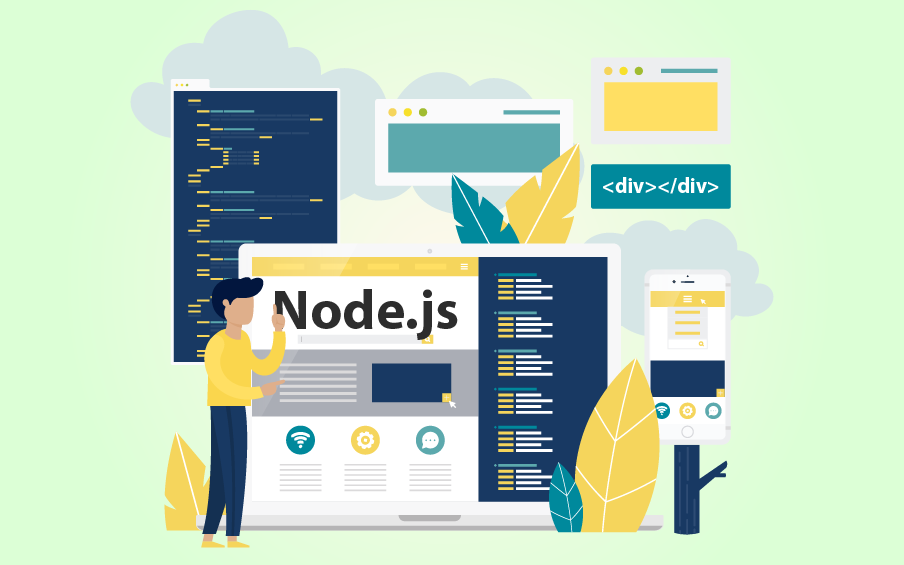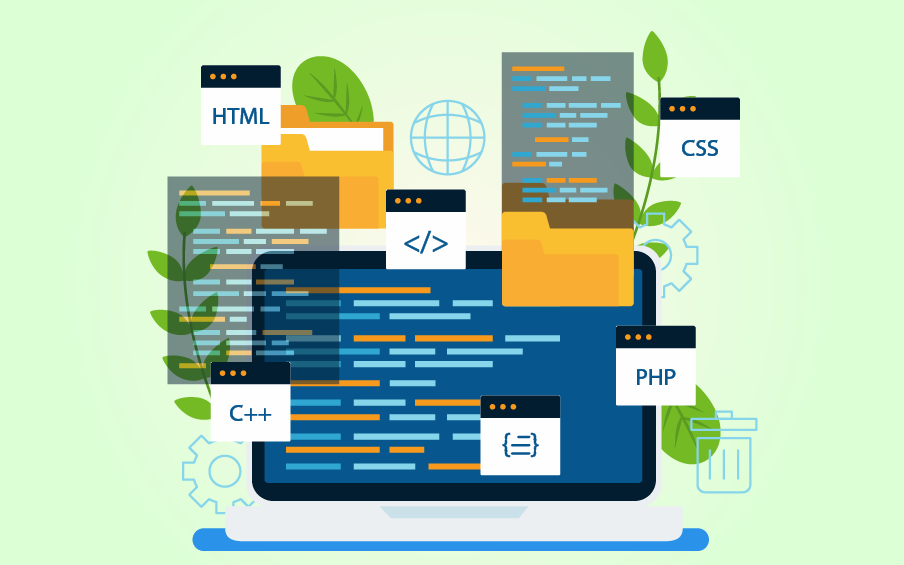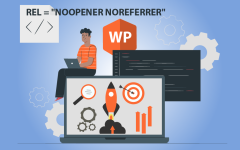
Use Node.js for Backend Development
Node.js is a technology built on Chrome’s V8 JavaScript engine that was first released in 2009 and continues to grow in popularity. nt, read our Node JS vs Django comparison analysis.
Walmart, LinkedIn, Uber, NASA and some other giant entities have used this open-source, straightforward and easy-to-customize environment for their web applications.
However, the popularity of Node.js does not mean it is right for you. In certain scenarios, shifting to Node.js may be unproductive and disappointing. Before making the switch, take time to weigh all the pros and cons..
This article will acquaint you with the key characteristics of Node.js to help you make an educated choice of technology for your web application’s backend.
What is Node.js?
Node.js is a runtime environment that allows software developers to launch both the frontend and backend of web apps using JavaScript. Although JS underpins all the processes for app assembly, as a backend development environment, Node.js, differs from the frontend environment. It has unique APIs that support HTTP requests, file systems and other server-side features for which frontend APIs provide limited support.
Because JavaScript has been traditionally used for the frontend, some developers believe it cannot be used to write internal codebase, but Node.js refutes that point of view.
Why Use Node.js
This technology is valued by the software development community for its following advantages:
- An I/O non-blocking model allows for serving multiple simultaneous requests, ensuring easy scaling and prompt execution of client requests on high-load platforms.
- With a growing number of online users demanding the most relevant information and services at their fingertips, the Node.js runtime environment’s flexibility and responsiveness are key merits required by modern web apps.
- Node.js is a comprehensive solution for full-stack development. It reduces skills requirements for programmers and eliminates the need to learn additional technologies.
- Node.js language is spoken by both frontend and backend developers, which makes for a more effective and better-coordinated working environment, and eliminates the need to explain how certain features work or what certain code means. Small projects can be handled by a single full-stack team, saving time and money.
- JavaScript programming language is very convenient and straightforward for backend development, inspiring software developers to shift away from more complex and cumbersome options. Node.js ensures that your app will not become obsolete in a few years, and it will be easy for other developers to understand your code.
- The development process is greatly accelerated by code sharing between frontend and backend.
- Node.js is an open-source technology that does not require costly licensing.
- Joining the active Node.js community gives you access to advice from experienced developers and a wide range of free customization features. Having access to necessary resources, knowledge and expert tips enhances your professional development.
Best Uses for Node.js
This runtime environment is most suitable for developing real-time apps that process large numbers of online requests on the client side that don’t require advanced security, with top-notch user experience and prompt response time. This includes live chats, instant messengers, online games, video conferencing and e-commerce services, and collaborative platforms for multiple users (Google Docs, Trello, Dropbox, etc.)
For those types of projects, Node.js is a much better option than slower and less flexible technologies like Ruby on Rails. The ability of Node.js to simultaneously handle multiple requests and provide prompt responses makes it an ideal solution for client-focused web app development. This runtime environment is found more frequently on single-page applications than any other backend technology.
When Node.js Backend is Not the Best Choice
Node.js is not a one-size-fits-all solution. Its efficiency decreases as the CPU load grows. If a large amount of data is processed on the server side, you should consider using more stable and resilient technology. Apps built with Node.js may fail to handle heavy-computing operations, blocking incoming requests and reducing response speed.
The APIs provided in Node.js are superfluous for developing simplistic CRUD and HTML apps that transfer data directly from the server. Using them only overcomplicates things.
One of the benefits of open-source technology is that free libraries and customization features can be uploaded to the Internet by anyone. The down side is that some donors have limited expertise and may make serious coding errors, reducing your app’s efficiency and dooming you to tedious bug fixing. It is better to borrow extensions from authoritative sources.
How to Get Started With Node.js
If Node JS server-side JavaScript aligns with the requirements of your project, it’s time to start mastering this cutting-edge technology. Take the following steps:
- Download the Node.js package from its official website – nodejs.org.
- Install the package manager. Installation instructions can be found at npmjs.com.
- Carefully read the official guide prior to writing the first lines of code, to get a handle on basic concepts and avoid mistakes.
- Move from theory to practice and build a basic Node.js server.
- Try popular frameworks to enrich and customize your stack, scale your apps, improve their performance, and configure additional features.
- After studying Node.js best practices, you will have sufficient knowledge to come up with original approaches to make your projects stand out from other apps available on the web.
Conclusion
Now you know how JavaScript for backend can benefit the software development process, why Node.js is so popular, when it can be most helpful, and when it is better to try other technologies. You can decide whether Node.js is a good fit for you, and launch your first backend server. Be sure to download libraries and customization features exclusively from verified sources.
To find out more about this runtime environment, read our Node JS vs Django comparison analysis.















